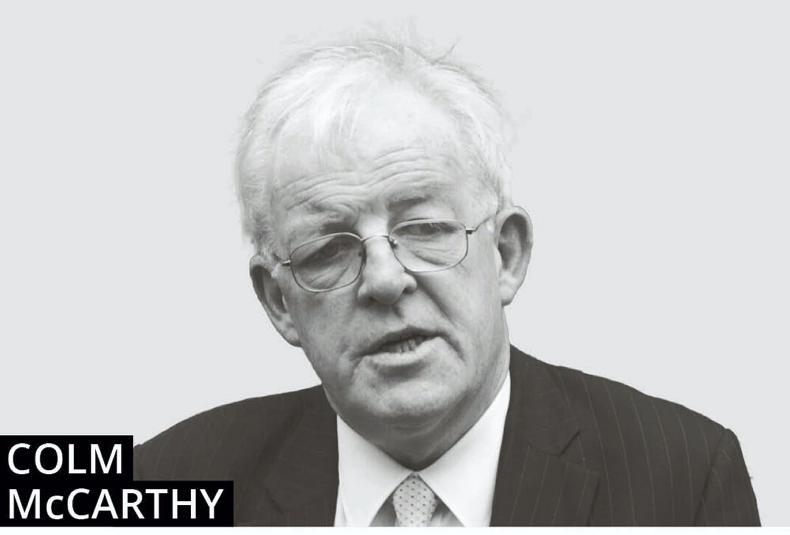This year’s budget devotes €13 billion to the public capital programme, almost four times the €3.4 billion invested in 2013 when the troika bailout of the Irish Exchequer concluded.
The low level of public investment continued in 2014 and for several further years: the volume of capital spending has barely recovered to the pre-crash levels of the bubble period before the 2008 crash.
The bubble excesses included the banking bust – every single bank needed State rescue – loose control over public spending and tax give-aways, disguised by a temporary revenue boost from stamp duty, itself a by-product of easy credit and the property bubble.
Ireland needed a sovereign bailout when nobody else would lend to the State. The IMF and the EU institutions stepped in, budgetary retrenchment was the inevitable price and today’s deficits in public infrastructure are a legacy of the capital cutbacks imposed when the State lost the ability to finance itself.
Contrary to popular narratives, the principal adjustments did not include huge cuts to current spending. There were public service payroll reductions, since restored, and a modest cull of quangos.
Drastic cuts
But the heavy lifting consisted of tax increases and drastic cuts to the capital programme, a familiar pattern from Irish fiscal crises over the decades. Government current spending did not fall, it rose through the troika years, not least because of the sharp rise in unemployment.
Irish governments have invariably preferred to dismember the capital programme when trouble strikes and to increase taxes where they can. The Universal Social Charge, a new tax on earnings, and the increase in the top VAT rate from 21% to 23%, date from this period.
Given the recent improvement in budgetary performance, due largely to an unexpected boom in tax revenues and the loosening of Government purse-strings, there is optimism about the prospects for the capital budget. The accountancy firm KPMG had this to say:
“Commitment of capital funding for 2024, assigned to our greatest areas of need, is very welcome”.
They continued: “We are also approaching key milestones in each of our major transport programmes (BusConnects, MetroLink, and DART+) which will start to see a large increase in annual capital expenditure as we move through planning and procurement phases into construction.”
These comments reflect broad approval in the media for the Government’s revival of public investment but fail to note that forward provision for the required finance has not been made.
National Children’s Hospital
Indeed it is clear that some big overshoots will emerge straight away.
Over-budget spending on the National Children’s Hospital, now around €1.400m for just one project, has yet to be covered by budget allocations and the three Dublin transit projects listed by KPMG are not included at realistic cost figures in future budgets.
MetroLink alone, if it costs no more than the €10 billion which is the current ball-park, will absorb three years of the entire national transport investment budget for all modes, road, rail, buses, seaports and airports. It could end up costing even more, for a single rail line on the north side of Dublin.
There have been press reports that construction cost inflation has pushed up the cost estimates for numerous projects already underway and the cabinet has been warned to expect overshoots when the bills come in, before any new projects are initiated.
Epidemic of plans
There is an epidemic of plans around the country for new projects, in addition to completion of those deferred during the capital programme collapse. The presumption is that there will never be another episode of fiscal correction.
The Department of Finance has drawn attention to the overhang of public debt while the Fiscal Council, the Central Bank and the Parliamentary Budget Office have been warning about the unreliability of the recent buoyancy in tax revenue.
It could evaporate over the next few years, as did the stamp duty bonanza of the bubble period, and with it the scope for budget generosity, especially if the revenue reversal coincides with an economic slowdown. On past form, the response will include cutbacks in the capital programme.
The need for a fiscal correction may be avoided – the banks are unlikely to go bust again and the Central Bank is better at supervision – but outstanding sovereign debt remains daunting and it would be foolish to expect the corporation tax windfall to last.
In the meantime, it is a gamble to promise indefinite expansion of the capital programme.
Unless public investment is managed carefully and benefits measured against realistic provision for costs, there may not be enough State capital in a downturn, leading to project cancellations.
Adherence to the Public Spending Code and the rejection of extravagant capital projects helps to protect the priorities. Instead, the essential requirement that all major projects pass a stringent and independent cost/benefit test is being ignored.






 This is a subscriber-only article
This is a subscriber-only article










SHARING OPTIONS: